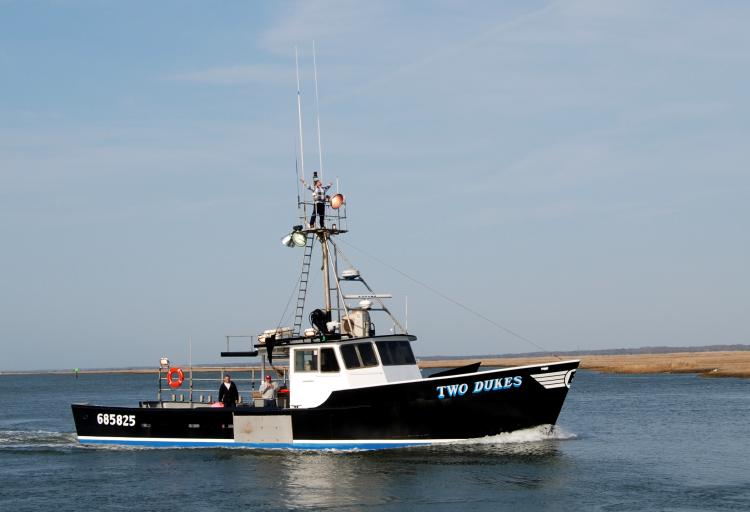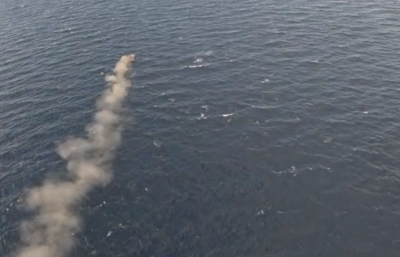New England offshore lobster fishermen, Georgia ship pilots and their boat builders will get three more years to meet Tier 4 emission standards for their lightweight and high-powered diesel engines, with a proposed extension from the U.S. Environmental Protection Agency.
In a notice published Monday EPA officials outlined their intent to give certain classes of high-speed vessels more time, given the technical challenges designers and builders face cramming in new emission controls.
The offshore lobster fishery needs engines beyond the 804-hp threshold where Tier 4 standards apply. But the specialized hull designs and deck layout required in the fishery leaves little space below for the selective catalytic reduction (SCR) technology that’s being used in ferries and tugboats to reduce particulates and gas emissions.
The same goes for the Savannah Bar Pilots, who serve Georgia’s rapidly growing ports and face a set of design challenges and constraints in planning to update their fleet.
“We’re limited to 65 feet (hull length) with the right whale speed restrictions,” said pilots association president Trey Thompson, whose colleagues transit waters frequented by the migratory, extremely endangered marine mammals.
The ride out requires lots of horsepower. “We’ve got a 17 mile run so we need 35 knots,” Thompson said, so the pilots need a 1,400-hp propulsion package.
Given the current state of SCR technology, the pilots’ builder Vigor in Seattle cannot meet both Tier 4 and the need to update the fleet, said Thompson.
But with the time extension, “I think we can go ahead and get a Tier 3 replacement in the near term, and look forward to new advances for a boat in the 2020s, he said.
SCR emission controls typically include bulky filters, exhaust gas handling equipment and tanks carrying urea catalyst, and present a challenge even to naval architects working on larger vessels.
“This proposal will provide boat builders the flexibility they need to meet EPA standards while they continue to manufacture products that are critical to marine industries,” said EPA Administrator Andrew Wheeler in announcing the proposal Monday. “This action reflects our mindset that environmental progress is best achieved by working with states and the regulated community to advance sound and attainable regulatory solutions."
In the announcement EPA officials provide details of their reasoning behind the lobster boat measure.
When the Tier 4 standards were adopted in 2008, most of the Northeast lobster fleet was equipped with engines below the 804-hp threshold for the incoming emissions rule, EPA officials wrote.
Since then, the offshore fleet working 40 miles out and beyond has grown. Those boats need more deck cargo space to carry their traps, and more speed to complete their trips in a reasonable time, according to the agency.
That led to bigger engines, built to Tier 3 standards without need for exhaust aftertreatment systems. But with the phase in of Tier 4 that started in 2017, builders now face the challenge of equipping the next generation of vessels, with engines and controls that cannot fit in the hulls that come out of existing fiberglass molds, the EPA says.
“Lobster boat builders looking to continue to install engines above (804 hp) that are now subject to Tier 4 standards need to prepare for more fundamental changes to vessel design to account for the room needed for additional emission control hardware, which raises other design issues,” according to the proposal.
“For example, onboard lobster tanks need to remain isolated from the reconfigured engine room and exhaust system to maintain low water temperature. However, lobster boat builders are not able to make substantial progress in redesigning their vessels until they have certified or prototype Tier 4 engines available.
“Once those engines are available, boat builders can undertake the anticipated effort to work out specific design needs for installing the Tier 4 engines in each vessel, including any necessary sea trials.”
The issue was pushed to the EPA by Maine’s congressional delegation including Sen. Susan Collins, R-Maine, Sen. Angus King, I-Maine, and Reps. Chellie Pingree and Jared Golden, both D-Maine.
“This delay in the implementation of the Tier 4 emission standards for commercial lobster-style boats should provide engine manufacturers time to design and certify engines that will both comply with Tier 4 emission standards and work safely and efficiently in these boats,” the lawmakers said in a joint statement. “It also prevents lobstermen from being burdened by requirements that are impossible to meet with the currently available technology.”







